![]()
![]()
![]()
Use LEFT and RIGHT arrow keys to navigate between flashcards;
Use UP and DOWN arrow keys to flip the card;
H to show hint;
A reads text to speech;
16 Cards in this Set
- Front
- Back
|
What is Cholinergic transmission? |
Transmission via ACh |
|
|
ACh structure |

Acetate linked to choline through a ester linkage |
|
|
What signals release of ACh from neurons? |
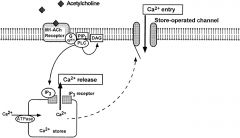
Voltage gated calcium channels open Signals release of ACh |
|
|
Recycling of ACh/Choline |
ACh at synapse broken down into choline and aceate Choline reabsorbed into neuron terminal Acetate cleaved from AcetylCoa, free acetate bound to recycled choline Forming new ACh |
|
|
What enzyme is responsible to breaking down ACH at synapse? |
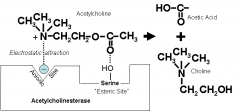
Acetlycholineesterase, breaks the ester bond between choline and aceate, Forms choline and acetic acid |
|
|
What enzyme transfers choline to acetate? |
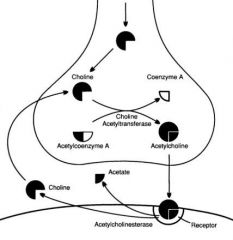
Choline Acetyl Transferase |
|
|
What are the 2 types of ACH receptor? |
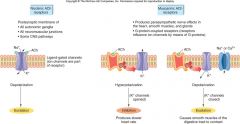
1) Nicotinic Ligand-gated ion channel Fast transmission 2) Muscarinic GP-coupled Slow |
|
|
ACh receptor diversity |
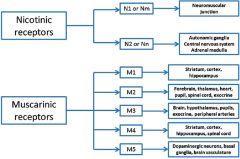
|
|
|
Noradrenalin, and adrenalin structure What do they share? What is their difference? |
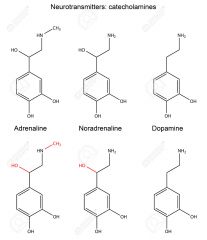
Both are catecholamines, they have a catechol group Adrenalin has a additional methyl group |
|
|
What happens to Noradrenalin after release? |
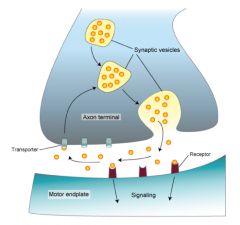
Not broken down its reabsorbed Re-uptake helps to terminate the signal |
|
|
Other than re-uptake by the neuron , how else is NE signal terminated? |
Intracellular metabolic enzymes 1) Monoamine oxidase (MAO) 2) Catechol-O-methyl transferase (COMT) |
|
|
What is a ganglion? |
Collection of cell bodies outside CNS |
|
|
Sympathetic NS organisation? |
Pre:- ACh, short Post:- Long, NE Thoracolumbar arrangement |
|
|
Parasympathetic NS organisation? |
Pre:- ACh nicotinic, long
Post:- ACh muscarinic, long Craniosacral arrangement |
|
|
Adrenal medulla |

Part of sympathetic Pre-ganglionic neuron synapses onto Adrenal medulla ACh nictonic Adrenal medulla releases NE and E into blood (hormones) |
|
|
Vagus nerve? |
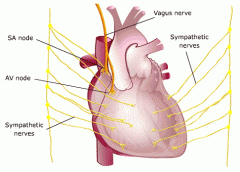
A parasympathetic nerve connected to the heart ACh acts of SA node, decreasing basal tone of heart Atropine is a drug that blocks the ACh receptor on SA node, increasing its heart rate |

